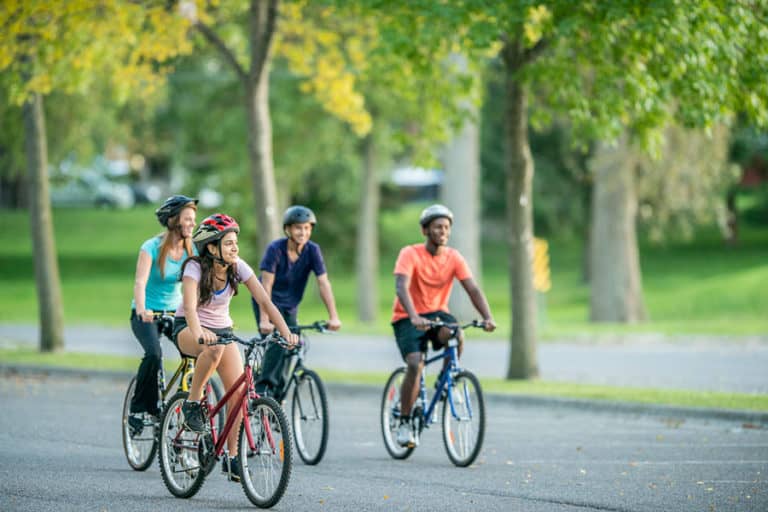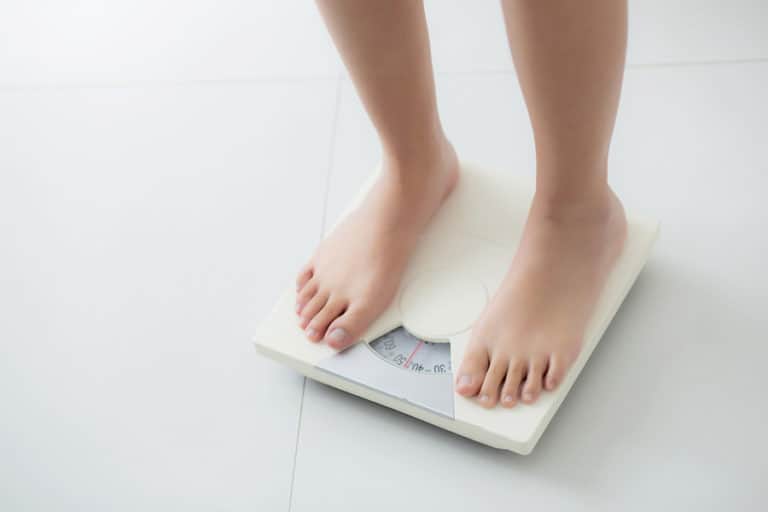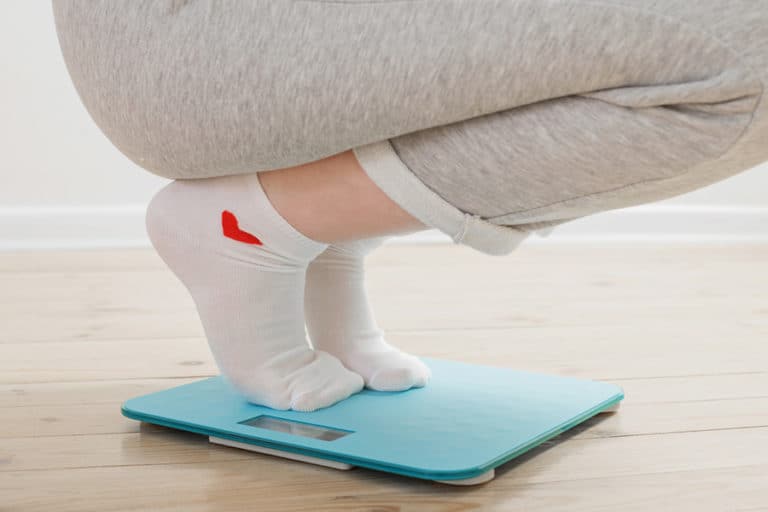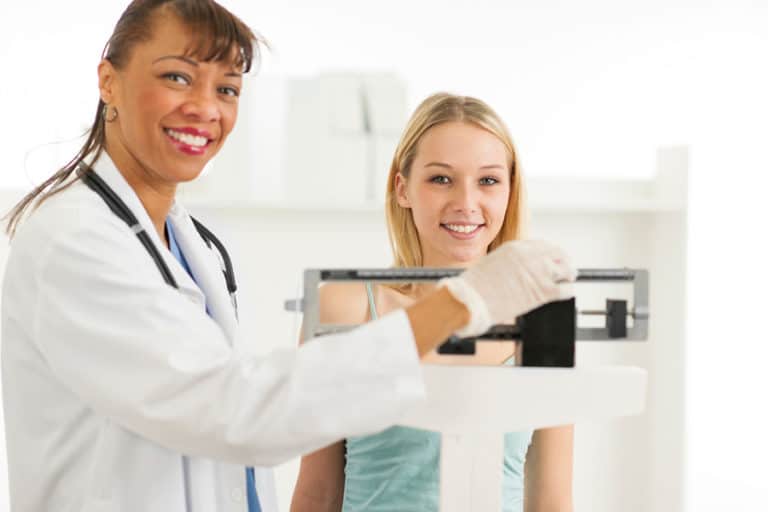12 Best Workouts For Teens To Stay Fit
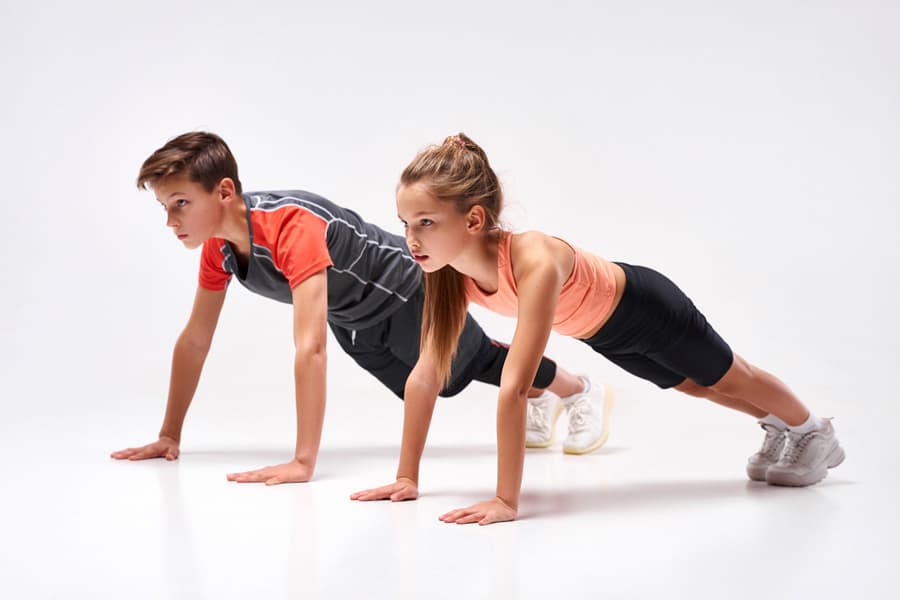
Best Teen Workouts | 1-Week Sample Plan | Workout Recommendations | Benefits | Precautions
The teen years are both critical and challenging. The onset of puberty causes several physical and hormonal changes in the human body.
Teenagers must make wise choices to stay fit and healthy at this age. This prepares them to tackle the immediate challenges of their teen years and builds the foundation for a healthy adulthood.
12 best workouts for teens
There are a lot of different workouts that teens can do to stay fit. Here are 12 of the best workouts for teens to add to their exercise routine to stay fit:
1. Push-ups
Level: Beginner/intermediate
Equipment: No equipment (Bodyweight)
How to do
- Get into a plank position with your hands shoulder-width apart and your feet hip-width apart.
- Extend your hands, keeping them in line with your shoulders.
- Lower your body to the ground, keeping your core engaged the whole time.
- Push back up to the starting position.
Sets/Reps: 3 sets of 10 reps
Summary: Push-ups are a great way to build strength in the chest and arms. They also help improve your posture by working on your core stability. This strength-building exercise is also known to enhance sports performance.
2. Superman
Level: Beginner-friendly
Equipment: No equipment (Bodyweight)
How to do
- Lie face down on the floor/yoga mat with your arms extended in front of you.
- Raise your legs, chest, and arms off the floor simultaneously.
- Hold the position for 5 seconds.
- Lower your legs, chest, and arms back to the starting position.
Sets/Reps: 3 sets of 10 reps
Summary: Superman is a great way to strengthen the muscles in your back. It can improve your posture and relieve back pain. It is great for teenagers as it is a low-risk, beginner-friendly exercise.
3. Pull-ups
Level: Beginner/intermediate
Equipment: Pull-up bar or any other sturdy object that can support your body weight.
How to do
- Grab the pull-up bar with an overhand grip, hands shoulder-width apart.
- Lift your feet off the ground and pull yourself up until your chin clears the bar.
- Lower yourself back to the starting position.
Sets/Reps: 2-3 sets of 6-10 reps
Summary: Pull-ups are safe and teen-friendly exercises that build strength in the back and arms. They help you improve your grip strength and enhance your bone density, which is very important at this age.
4. Seated dumbbell press
Level: Intermediate/advanced
Equipment: Dumbbell and weight bench
How to do
- Sit on a weight bench with a dumbbell in each hand at shoulder level.
- Press the dumbbells up above your head.
- Lower the dumbbells back down to shoulder level.
Sets/Reps: 3 sets of 8-10 reps
Summary: The seated dumbbell press is a good exercise for teens who have just advanced to weight-based exercises. It is great for targeting the shoulder muscles. This exercise can also be done with one arm at a time for more challenge and unilateral benefits.
5. Bench press
Level: Intermediate/advanced
Equipment: Barbell and weight bench
How to do
- Lie flat on a weight bench with a barbell above you under the rack.
- Grip the barbell with your hands shoulder-width apart.
- Unrack the barbell and lower it down to your chest.
- Push the barbell back up to the starting position.
Sets/Reps: 3 sets of 6-8 reps
Summary: The bench press is a great way to gain muscle and build strength in the chest. This exercise also helps build muscle endurance.
6. Military press
Level: Intermediate/advanced
Equipment: Barbell
How to do
- Stand with the barbell in front of you on the rack at about shoulder level.
- Grip the barbell with your hands slightly wider than shoulder-width apart.
- Unrack the barbell and press it overhead by extending your arms upwards.
- Lower the barbell back to your collarbone level.
Sets/Reps: 3 sets of 8-10 reps
Summary: The military press is a great way to build strength and muscle in the shoulders. This exercise can be done with dumbbells as well. It also helps improve your posture.
7. Bear crawls
Level: Beginner-friendly
Equipment: No equipment (Bodyweight)
How to do
- Get down on all fours with your knees and hands on the ground.
- Lift your knees off the ground so that you are now on your toes and hands.
- Crawl forward by moving your opposite hand and foot at the same time.
- Ensure you keep your core engaged.
Sets/Reps: 3 sets of 10 reps on each side. (10-20 yards)
Summary: Bear crawls are a great way to work on your upper body and core strength. They also help improve your coordination and balance.
8. Squats
Level: Beginner/intermediate
Equipment: No equipment (Bodyweight)
How to do
- Stand with your feet shoulder-width apart and your toes pointing outwards.
- Lower your body down by pushing your hips down and bending your knees.
- Go down till your thighs are parallel to the ground.
- Push back up to the starting position.
Sets/Reps: 3 sets of 10 reps
Summary: Squats are a great way to work on your lower body strength. They help you improve your mobility and also burn fat. You can perform squats with weights for more challenge.
9. Donkey kicks
Level: Beginner/intermediate
Equipment: No equipment (Bodyweight)
How to do
- Get down on all fours with your hands and knees on the ground.
- Keeping your left knee bent on the floor, kick your right leg back till the raised knee is in line with your back.
- Squeeze your glutes at the top of the movement.
- Lower your leg back down and repeat.
Sets/Reps: 3 sets of 10 reps on each side.
Summary: Donkey kicks are a great way to strengthen your hamstring. They also help improve overall stability and mobility in your lower body. Being a unilateral exercise, they also work on your muscle imbalances.
10. Crunches
Level: Beginner/intermediate
Equipment: No equipment (Bodyweight)
How to do
- Lie down on your back with your knees bent and feet flat on the ground.
- Place your hands behind your head or crossed over your chest.
- Contract your abdominal muscles and curl your torso up towards your knees.
- Pause at the top of the movement.
- Slowly lower yourself back down to the starting position.
Sets/Reps: 3 sets of 10-15 reps
Summary: Crunches are a great way to work on your rectus abdominis (abs). They also help improve your posture and can help prevent back pain. Crunches are also known to burn a lot of calories.
11. Russian twist with weights
Level: Beginner/intermediate
Equipment: Dumbbell or kettlebell
How to do
- Sit on the ground with your knees bent and feet flat on the ground.
- Hold a weight in your hands and lean back so that your torso is at a 45-degree angle to the ground.
- Slightly lift your feet off the ground.
- Twist your torso to the right and then to the left, along with the weights.
Sets/Reps: 2 sets of 10-15 reps on each side.
Summary: The Russian twist is a great way to work on your obliques. It also helps improve your balance and coordination. This exercise is known to burn calories as it intensely works on your abdominal muscles.
12. Leg press
Level: Advanced
Equipment: Leg press machine
How to do
- Sit on the leg press machine and place your feet shoulder-width apart on the footplate/platform.
- Unlock the safety bars and lower the weight by bending your knees.
- Push the foot plate away with your heels until your legs are fully extended.
- Bend your knees and return your legs to the starting position.
Sets/Reps: 2 sets of 10 reps
Summary: The leg press is a great way to strengthen your quads, glutes, and hamstrings. It is also known to improve mobility and squat performance. It is also known to reduce the risk of injury.
Other exercise types
Apart from the above-mentioned, there are other types of activities that teenagers can undertake to stay in shape:
- Swimming or dancing
Swimming and Dancing are also known to be great forms of cardio. It provides a full-body workout while helping you stay fit and have fun at the same time.
- Sports like football and basketball
Playing sports is a great way to stay active and fit. It helps improve your coordination and stamina while burning calories.
Yoga is great for toning your muscles, improving your flexibility, and helping you relax. Practicing yoga for at least 30 minutes a day can help you stay fit and healthy.
1-week sample workout plan to follow for teenagers
Given below are exercise circuits for teens to quickly follow through the week:
| Days | Circuits (2-3 sets) |
| Monday | Squats: 10-15 reps Bear crawls: 10-15 reps Bench press: 8-10 reps |
| Tuesday | Push-ups: 10-15 reps Military press: 6-8 reps Russian twists with weights: 6-8 reps |
| Wednesday | Crunches: 10-15 reps Seated dumbbell press: 6-8 reps |
| Thursday | Rest |
| Friday | Superman: 10-15 reps Donkey kicks: 10-15 reps Leg press: 6-8 reps |
| Saturday | Rest |
| Sunday | Squats: 10-12 reps Donkey kicks: 10-12 reps Pull-ups: 5-6 reps |
Note: You may modify the sets and reps of the circuit. Adjust the weights as per your desired intensity. Remember to warm up before and cool down after the workout.
What age should a teen work out?
As a teenager, knowing when and how you should begin your fitness journey is integral. Below is some explanation about the intensity of exercise teens should aim to perform at different stages of maturation.
Before puberty
Ideally, teens should be performing bodyweight exercises at this stage. These could be calisthenics, swimming, running, or even games like football. This is because their bodies are not fully ready for the added stress of weightlifting.
At this age, your workout goals as a teen should be improving your form, endurance, and stamina.
After puberty
Puberty usually sets in between ages 10 -14 for girls and ages 12-16 for boys [1]Medlineplus: Puberty. At this stage, growth hormones kick in and prepare you to lift weights in the weight room.
Teens can start to focus on more specific goals. This might mean toning up and building muscle.
You can start by using light weights to achieve these goals, but always use a spotter when starting out with strength training.
Why should teens work out?
According to the Centers of Disease Control and Prevention (CDC) [2]Centers of Disease Control and Prevention: Physical Activity Guidelines for School-Aged Children and Adolescents, adolescents aged 6 -17 should perform at least 60 minutes of moderate-to-vigorous physical activity daily. This is because their bones, muscles, and joints become stronger as kids grow.
Regular physical activity can help to optimize that growth, maintain health, and reduce the risk of injuries in teens.
While performing exercises, the brain releases chemicals called endorphins [3]Mayo Clinic: Stress Management. These chemicals interact with the receptors in the brain, reducing pain perception.
Endorphins work similarly to morphine by producing a positive feeling in the body. This is extremely important during the vulnerable teenage years.
Mental health benefits of working out for teenagers
- Reduces the risk of stress, anxiety, depression, and other mental health problems.
- It improves self-esteem and concentration, which eventually improves academic performance.
- Improves the quality of sleep.
Physical benefits of working out for teenagers
- Regular and optimum exercising helps develop lean muscle mass and stronger bones [4]National Institutes of Health: Exercise for Your Bone Health.
- It improves cardiovascular endurance.
- Reduces the risk of injuries by making the muscles strong and agile.
- Helps lose weight and maintain it.
- Improves coordination and balance.
- Improves overall athletic performance.
Safety measures for teens
Safety is one of the primary concerns regarding teens working out. The first thing to do is to consult your doctor before you get on to any fitness program. Here are some general safety guidelines for teens who work out:
- Warm-up and cool down for 5-10 minutes before and after the workout.
- Drink plenty of water to stay hydrated.
- Start slowly and gradually increase the intensity of your workouts.
- Take rest days in between workout days.
- Consult a certified trainer if you’re unsure about exercise and before you begin your workout program.
- Listen to your body, don’t overdo it. Avoid working out if you’re injured or sick.
- Check the equipment you are working with to avoid injury.
- Keep a first aid kit handy in case of any accidents.
- Avoid working out on an empty stomach; however, do not eat immediately before working out.
- Wear comfortable clothes and shoes.
- Remember, if your primary concern is losing weight, you must follow a healthy diet along with a workout routine to reap its benefits.
Conclusion
Following a workout routine has numerous benefits for both the mind and body of teenagers. However, it is important to follow safety guidelines to avoid any injuries. Teens should also consult a doctor before starting any fitness program.
References
| ↑1 | Medlineplus: Puberty |
|---|---|
| ↑2 | Centers of Disease Control and Prevention: Physical Activity Guidelines for School-Aged Children and Adolescents |
| ↑3 | Mayo Clinic: Stress Management |
| ↑4 | National Institutes of Health: Exercise for Your Bone Health |


